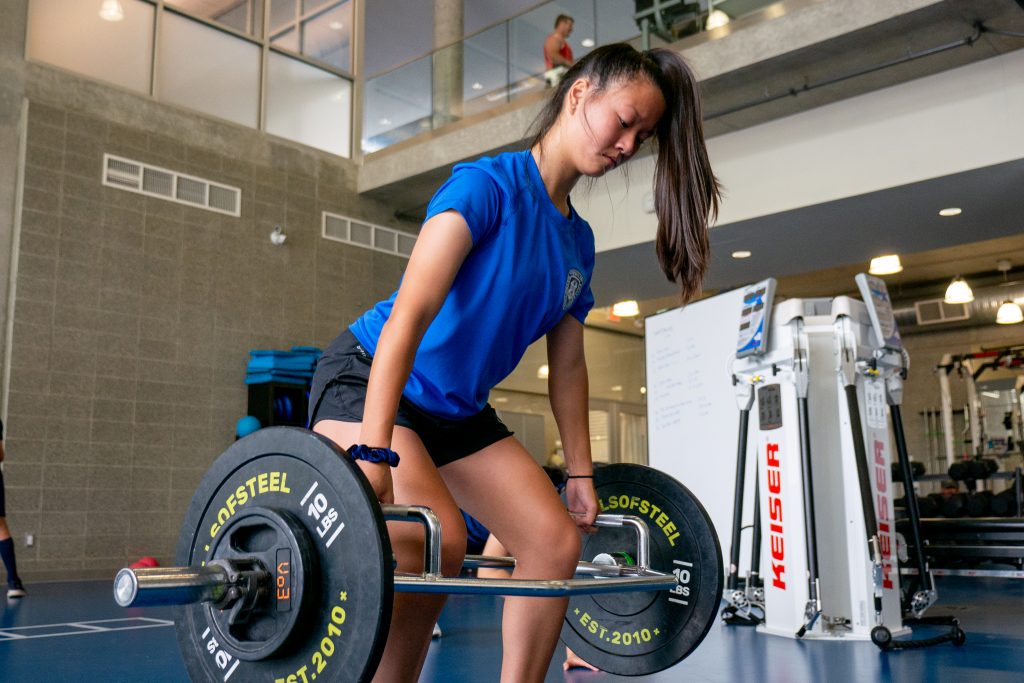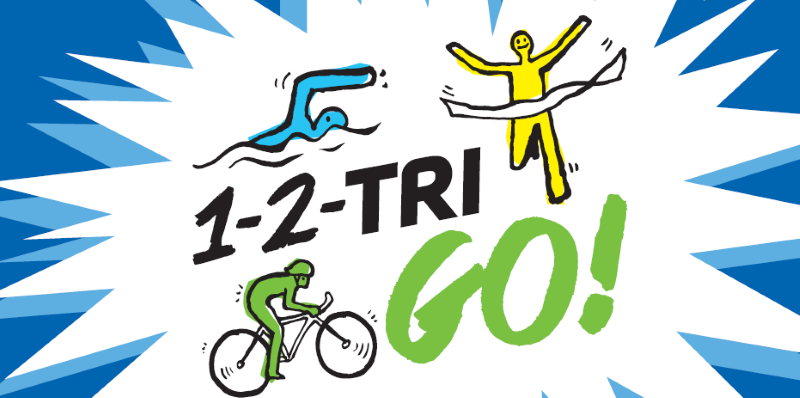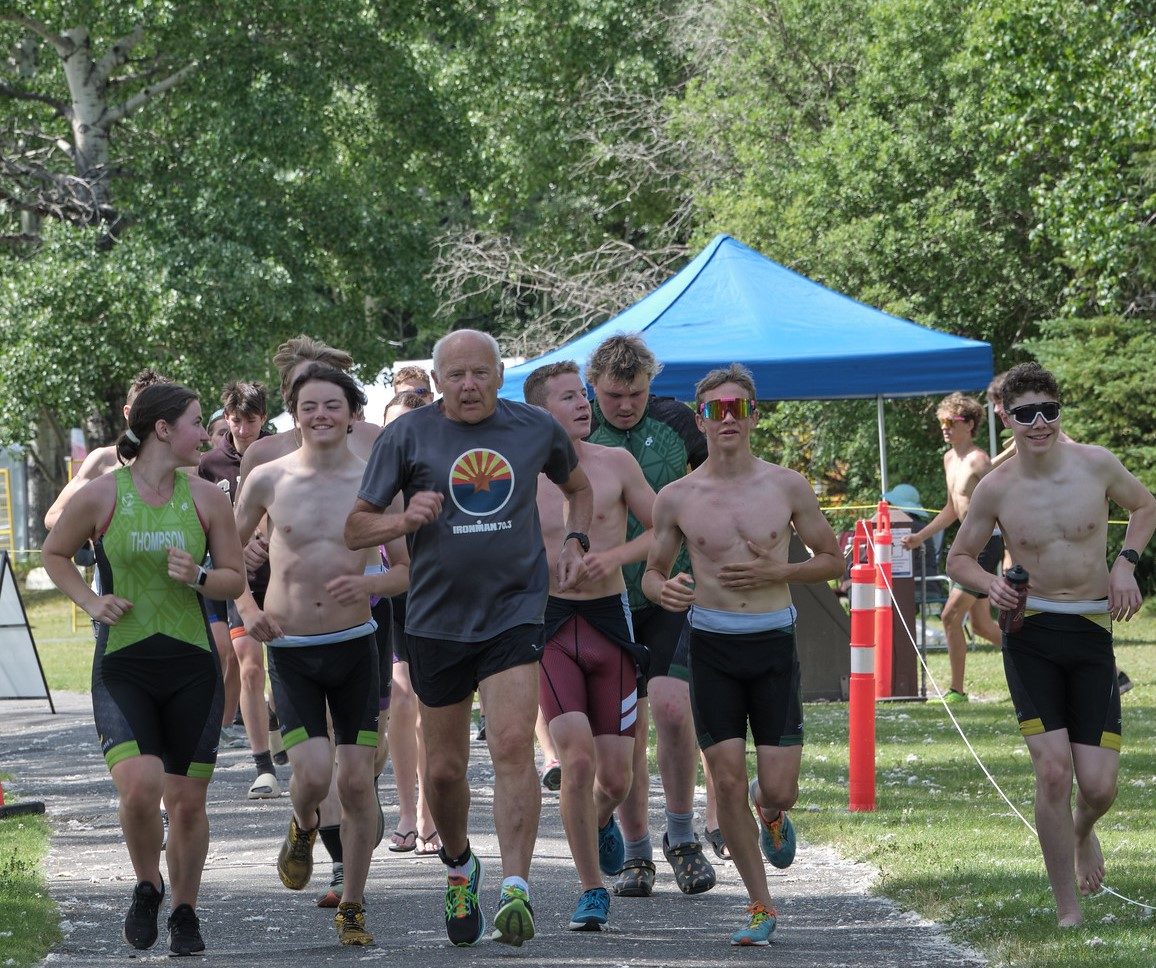August 28, 2020 | by Katie Meredith, Strength & Conditioning Coach | Hydrotherapy Coach | Performance Rehabilitation Coach
Living in the year 2020, the promotion of equality between genders, race, age and values is hard to ignore. Physically and metabolically, however, there are significant differences between males and females in sport that in turn should not be ignored.
One stark reason for identifying these differences are the varying common injuries between men and women. The overall performance of female athletes can be affected by recognizing and planning around these risks and differences.
So, how do females differ athletically, and how do we alter training to account for this?
ANATOMY AND MOBILITY
In addition to obvious differences on the surface, the female musculoskeletal system differs significantly to men.
Wider hips change the biomechanics of females during running, jumping and landing, which can place greater forces through the knees4 as well as hips, lower back and ankles.
However, wider hips in women may also be a contributor to greater range of motion or flexibility at the hip joint2 – an obvious advantage in many sports such as figure skating or gymnastics.
That said, joint flexibility differs between individuals and is also highly dependent on sports played, genetics and the movement experience of the athlete!
During puberty in particular, girls tend to grow longer limbs at a quicker rate and at an earlier point in their lives than boys – but the growth of relevant muscle groups does not often happen at the same time as skeletal growth.
As a result, younger female athletes may have a harder time stabilizing joints during high velocity and high impact sport. This places adolescent females at higher risk than their male counterparts for certain types of injuries, in particular anterior cruciate ligament (ACL) tears at the knee.
HORMONES

A key consideration for the female athlete is the fluctuation of hormones during the menstrual cycle. In fact, earlier this year, Chelsea women’s football club were the first professional sports team to tailor individual training programs around the cycles of their players.
Although some evidence shows little difference in strength and endurance throughout the cycle5, some research has linked the varied hormone levels to changes in athletic performance.
At the start of the cycle, where hormone and iron levels are low overall, females may experience lower energy during training. Later, higher rates of estrogen during the days preceding ovulation may be linked to tendon laxity and higher risk of sustaining soft tissue injuries, such as lower back pain or ACL tears3. An increase in estrogen, however can also increase the insulin sensitivity and our ability to process glucose1,6 – some female athletes may feel stronger during this time.
One important hormonal consideration for older female athletes is the effect on bone mineral density. In younger years, the female skeleton can continue to increase in bone mineral density, until it reaches its maximum roughly in the early 20s. Women have, in essence, a ‘bone bank’ until they are 18-20, in which the formation of bone mineral occurs at a greater rate than the breakdown of bone tissue, increasing bone mineral density. As a result, the teenage years are the prime time to optimize a female athlete’s bone health for the rest of her life.
After the onset of menopause, estrogen levels begin to drop. Bone breakdown then increases and the creation of new bone decreases, resulting in an overall drop in density of the bone, and potentially osteoporosis.
HOW CAN CORRECT TRAINING HELP?

Training girls does not have to be vastly different to training boys, particularly at a young age. However, certain considerations can give girls the preparation to combat several physiological differences they face.
Movement quality is key. Whilst young athletes before the age of puberty have not yet matured physically for heavily-loaded strength training, we can give them the skills to perform movements such as squatting, jumping and decelerating with control, to prep them for higher force strength work in their later years.
Once girls are moving well, strength training should be implemented to build resilience.
Generally, young athletes can commence substantial, loaded strength work after puberty (roughly 11-13). As they progress through their athletic careers, heavier resistance training can increase the physical capacity of the joints and the ability for girls to absorb and resist the forces experienced during sport, such as cutting, landing and jumping. In particular, building capacity in the hamstrings, glutes and core are important for building robust female athletes.
Strength training is just as important for older females – and it is never too late to begin a structured program. Bone mineral density has been shown to improve in post-menopausal women through high intensity resistance training and structured impact work such as jumping and skipping7.
It may seem that girls are on the back foot of athletic development compared to boys, yet these are simply considerations of training females in sport – no different to considering the physiology or anatomy of a male athlete. Overall, an individualized training approach can ensure a reduced risk of injury and ultimately improve performance.
Looking for a strength & conditioning program for your youth female athlete? GirlSTRONG is a comprehensive, small-group strength & conditioning program specifically targeted at female athletes ages 13-15.
BENEFITS OF THE PROGRAM INCLUDE:
- Reduce risk of non-contact injuries through evidence based strategies
- Physical preparation for sport performance
- Introduction to weight training in a safe and supervised environment
- Free participation in SportSTRONG combines.
There are also other options available for female athletes to train effectively for their individual fitness and sports goals. From Small Group Training, to our SportSTRONG or GirlSTRONG programs for youth athletes, to personalized coaching, their Fitness and Performance Centre team has an option that best suits you and your needs.
Triathlon BC members can save up to 25% off select performance analyses, services and lodge accommodations at Fortius Sport & Health. REDEEM HERE. Use code TriFortius2020.
Visit the Fortius website to learn more, or book a free consultation today.
References:
- Chidi-Ogbolu, N., & Baar, K. (2019). Effect of Estrogen on Musculoskeletal Performance and Injury Risk. Frontiers in physiology, 9, 1834. https://doi.org/10.3389/fphys.2018.01834
- Czuppon, S., Prather, H., Hunt, D. M., Steger-May, K., Bloom, N. J., Clohisy, J. C., Larsen, R., & Harris-Hayes, M. (2017). Gender-Dependent Differences in Hip Range of Motion and Impingement Testing in Asymptomatic College Freshman Athletes. PM & R : the journal of injury, function, and rehabilitation, 9(7), 660–667. https://doi.org/10.1016/j.pmrj.2016.10.022
- Herzberg, S. D., Motu’apuaka, M. L., Lambert, W., Fu, R., Brady, J., & Guise, J. M. (2017). The Effect of Menstrual Cycle and Contraceptives on ACL Injuries and Laxity: A Systematic Review and Meta-analysis. Orthopaedic journal of sports medicine, 5(7), 2325967117718781
- Lepley, A. S., & Kuenze, C. M. (2018). Hip and Knee Kinematics and Kinetics During Landing Tasks After Anterior Cruciate Ligament Reconstruction: A Systematic Review and Meta-Analysis. Journal of athletic training, 53(2), 144–159. https://doi.org/10.4085/1062-6050-334-16
- McNulty, K.L., Elliott-Sale, K.J., Dolan, E. et al. The Effects of Menstrual Cycle Phase on Exercise Performance in Eumenorrheic Women: A Systematic Review and Meta-Analysis. Sports Med (2020). https://doi.org/10.1007/s40279-020-01319-3
- Oosthuyse, T., & Bosch, A. N. (2010). The effect of the menstrual cycle on exercise metabolism: implications for exercise performance in eumenorrhoeic women. Sports medicine (Auckland, N.Z.), 40(3), 207–227. https://doi.org/10.2165/11317090-000000000-00000
- Watson, S. L., Weeks, B. K., Weis, L. J., Harding, A. T., Horan, S. A., & Beck, B. R. (2018). High-Intensity Resistance and Impact Training Improves Bone Mineral Density and Physical Function in Postmenopausal Women With Osteopenia and Osteoporosis: The LIFTMOR Randomized Controlled Trial. Journal of bone and mineral research : the official journal of the American Society for Bone and Mineral Research, 33(2), 211–220. https://doi.org/10.1002/jbmr.3284




